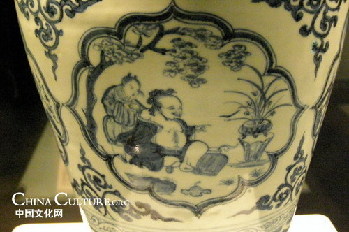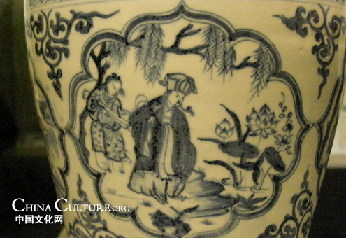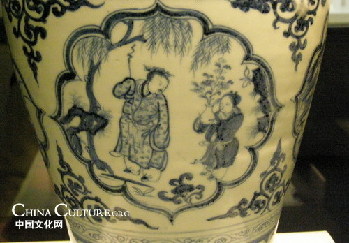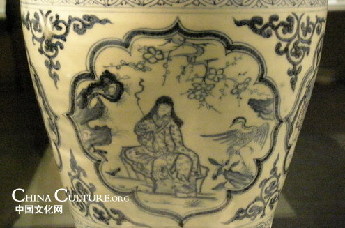|
Archeologists confirmed that the blue-and-white glazed jar was produced in the Yuan Dynasty (1271-1368) in Jingdezhen, the porcelain capital of China. There are four pictures painted on the body of the jar, featuring four well-known ancient scholars and their beloved floras. The four scholars include Wang Xizhi, a Chinese calligrapher elite in the 4th century, and his beloved orchid, Zhou Maoshu, a Chinese Neo-Confucian philosopher in the 11th century, his beloved lotus, the Chinese recluse poet Tao Yuanming (365-427), his beloved chrysanthemum, and Lin Hejing, another recluse poet from the Northern Song Dynasty (960-1127), his beloved plum and crane.
 |
|
Wang Xizhi and his beloved orchid
|
 |
| Zhou Maoshu and his beloved lotus |
 |
| Tao Yuanming and his beloved chrysanthemum |
 |
| Lin Hejing and his beloved plum and crane. |
Skull fossil in Yun County
Two skull fossils were discovered in Yun County, Hubei Province, in 1989 and 1990. Archeologists confirmed that they were the fossils of Homo erectus dating back 1 million years ago. Their facial features are similar to that of the paleoanthropological fossils that had already been discovered in other parts of China and other Asian countries.
The No. 1 skull fossil is 26 cm long, 19 cm wide, and 12 cm tall. It’s the first
paleoanthropological skull fossil discovered in Hubei.
|